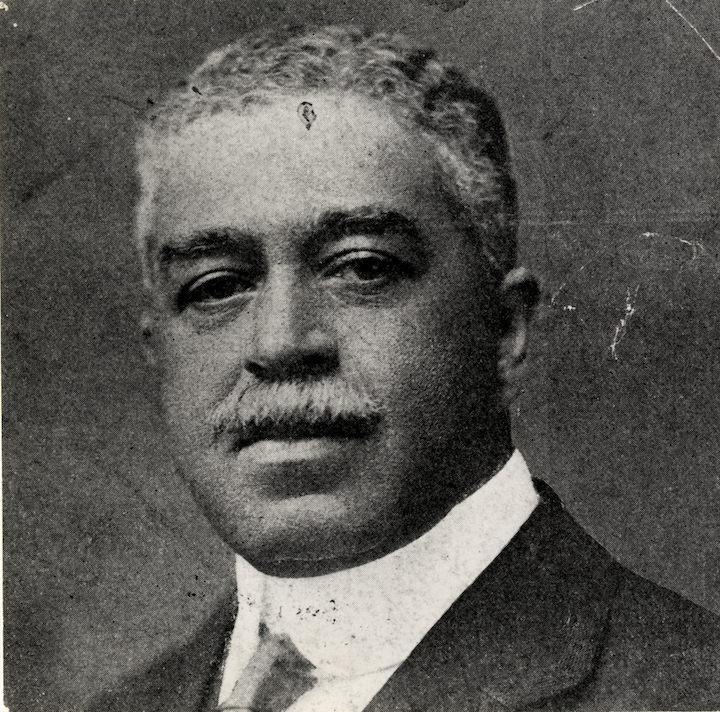It was on April 23rd, 1929 that for the first time in New York African American spirituals were performed by a white choir at Mother Zion A.M.E church- an all black congregation. This performance was a landmark for the American choral tradition where the practice of spirituals in mostly or all white choirs is still a hotly debated topic. The performance on this fated Friday in the early 1900s was documented as well received1, despite the interpretation of H.T. Burleigh’s arrangements (of which the concert was entirely programmed) by a white conductor and choir.

H.T. Burleigh, b. 1866 was an African-American composer, baritone, and arranger of spirituals that are still performed to this day.2
Dr. Carl Reiland, the rector of St. George, spoke to how important Burleigh was as an American composer and a preserver of African American music in an appearance after the performance. In the current day, almost a century after the performance cited in this post, I was in my own choir rehearsal discussing proper performance practice for spirituals. My choir director, Anton Armstrong, is currently heralded as one of the leading voices on authentic performances of spirituals by mostly white choirs.
He says that choosing to program spirituals for the St. Olaf Choir is how he brought a part of himself to the predominately white lutheran choral tradition on campus. His colleague in this specific field, Andre J. Thomas, speaks to how choirs can perform spirituals authentically and respectfully regardless of the predominant race of the choir. Citing an article by famed black choral composer and spiritual arranger Rollo Dilworth, Thomas speaks to the difference between acceptable and objectionable cultural appropriation.3

The first page of Rollo Dilworth’s arrangement of traditional spiritual “Give Me Jesus”4
.
Here is an excerpt from Dilworth’s aforementioned article- I include this entire paragraph because I feel his idea here is explained perfectly and to interpret it in any way other than how he himself has worded it would be disrespectful.
When does cultural appropriation become objectionable? Dilworth points to three more definitions from Young. When an outsider takes, without permission, property that belongs to another culture, that’s “cultural appropriation as theft.” If, for example, he were to incorporate a digeridoo part into a piece of music without permission from the indigenous Australian community that developed the instrument, Dilworth says he would be committing theft, even if his intent were respectful. If he published the piece and made money from it, the offense level would rise to “cultural appropriation as assault,” because the act would cause harm to the insider culture or its members. Cultural appropriation becomes a “profound offense” when the act offends a person’s moral sensibilities, provoking a gut reaction.5
Looking upon the modern choral scene and the place that spirituals have in it- I can now look back upon my experiences with singing spirituals in the St. Olaf Choir. Anytime we sing spirituals, Dr. Armstrong will typically ask us to change our pronunciations of certain words and will often say “you don’t have to pronounce it like an all black choir, but I don’t want you pronouncing it like an all white choir- because the fact of the matter it that you aren’t an all white choir.”
I would personally encourage more performers, musicologists, composers, and conductors to incorporate Dilworth’s ideas of objectionable and acceptable cultural appropriation. Especially in the cultural climate of today, race and identity in art are topics that we need to address- and more importantly have tools to address that draw clear lines between what is right and what is wrong. I for one hope that a more unified idea of what is authentic and proper performance practice for certain kinds of choral music reveals itself to academia in the future so that music can continue to be preserved and performed in culturally and historically enriching ways.
Works Cited:
https://www.proquest.com/docview/226345003/B446A6DFB26F46E8PQ/1?accountid=3511
https://blackamericaweb.com/2018/09/12/little-known-black-history-facts-harry-t-burleigh/2
http://youtube.co/watch?v=0yeiGNRnpMM3
https://www.sheetmusicdirect.com/en-US/se/ID_No/429107/Product.aspx4
https://chorusamerica.org/article/cultural-appropriation-culture-stealing-culture-sharing#:~:text=When%20an%20outsider%20takes%2C%20without,instrument%2C%20Dilworth%20says%20he%20would5
